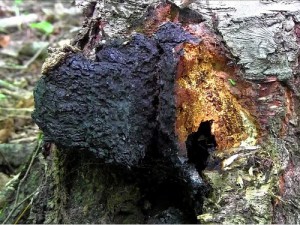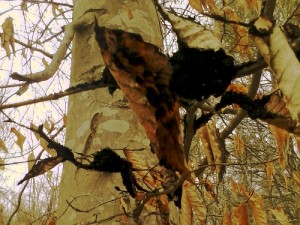Recently I was hiking along a river and spotted black clumps in a beech tree. I was very excited by this find and collected some samples. When I returned home I cut a slice and tried to catch a spark. I used a ferro rod for maximum heat and duration of sparks but the material wouldn’t catch the spark. I let it dry out for a few days but had the same results. After photographing the material I posted it on a Facebook group page where it was identified as Scorias Spongiosa (S.S.) a.k.a. “honey dew fungus”. It is a fungus that grows on aphid droppings and is restricted to one species of tree, American beech.
By the comments of others I learned that I.O. grows on the TRUNK of birch trees and S.S. grows on the BRANCHES and LEAVES on the beech trees. I can see now how early reports of I.O. on beech trees was mistaken and wanted to share this experience with other readers so that they will be informed of the difference and avoid false hopes of finding I.O. on beech trees.




